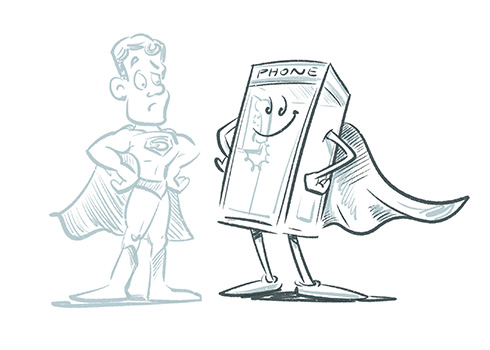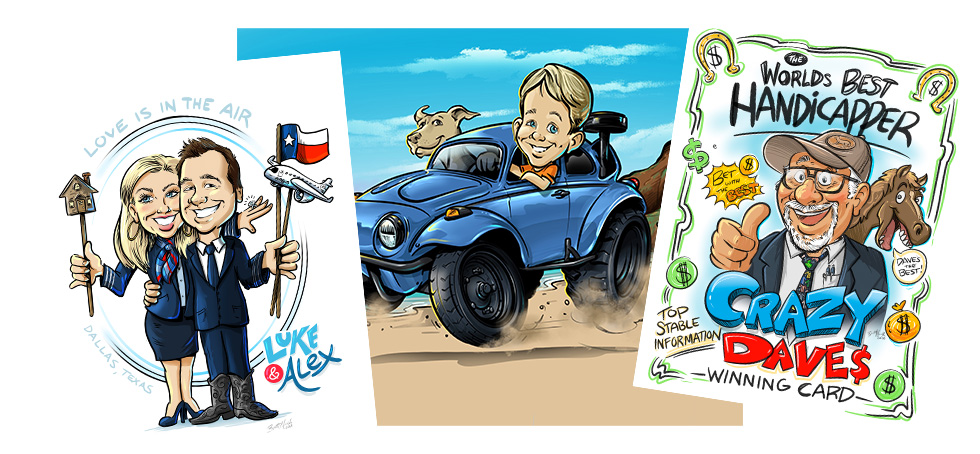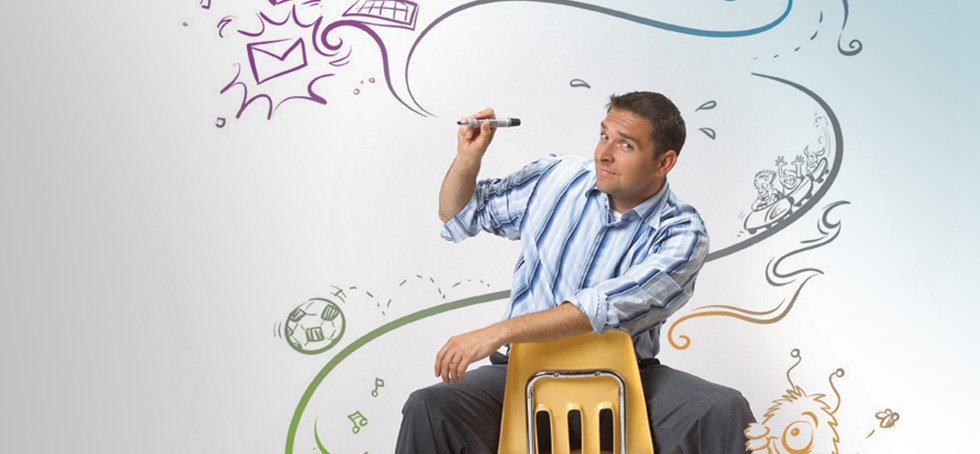How working as a theme park caricature artist prepared me for agency life
Sometimes life hands you a life-changing experience when you least expect it. For me, it came the summer I graduated from high school and took a job as a caricature artist at a theme park.

For long as I can remember, art was my thing. My escape. My passion. When I was five or six, I doodled, I drew, and I loved it. At first, I copied cartoon characters. Garfield the Cat was a favorite. Pretty soon, I was inventing and sketching my own creations. Including my as-yet unrecognized contribution to the superhero pantheon – Super Booth (!). Yeah, he was a phone booth. Yeah, maybe not my best idea.
In high school, I sketched all the time. Did tons and tons of caricatures of classmates and teachers. Air-brushed my creations on T-shirts and sold them to my buddies. My senior year, with the help of my wonderful high school art teacher, I was offered a summer gig as a caricature artist at a popular local children’s theme park.
I became the youngest artist there that summer – by a long shot. The next-youngest one was 24. My career as a working artist had begun. Thousands of hours of drawing caricatures later, I had learned a thing or two. Things that would prepare me for a professional creative career. Here goes.
Be confident – ALWAYS
Sesame Place had drawing booths set up around the park. Every morning, parents would line up, kids in tow, waiting for their turn in the spotlight. And every morning, I could count on at least one conversation going something like this:
Parent, holding child’s hand, disappointed face: “What time does the artist get here?”
Me: “I’m the artist.”
Parent: “No really, when does the artist get here?”
I mean, I get it. I looked like most of the teenagers working at the park as lifeguards and cashiers. And the baby face I still had wasn’t helping. Some parents actually walked away when they heard that I was the artist. Sometimes they returned later hoping to see that an older artist in my place. Some never returned. Some allowed me to start drawing. But I could see the skepticism on their faces. And I learned pretty quickly how to put them at ease, give them confidence. Just to get them to let you START drawing.
And the doubt didn’t come just from the parents. It’s no secret that kids can be brutally honest. As I drew, I sometimes overheard people, big and small, saying stuff like, “Hah, I’m better than this guy” or “That doesn’t look like him/her.” So what do you do? You keep your head down and keep drawing.
Most of the time, the finished drawing put their mumbled concerns to rest. Usually, people were happy with their caricatures. But not everyone. Some remained dissatisfied, thinking the drawing didn’t look like their child. Sigh.
Learning to deal with disappointed clients was a huge step in my evolution as a young creative, starting down the road to a professional career. Everyone in the creative field has had days when a client is unhappy. And ultimately, you know you’re going to have to sit down calmly and find a way forward. So what do you do when a client is unhappy?
You stay confident. You stay open to feedback. You adjust. You grow.
Embrace the pressure
OK, so there I was. Young, inexperienced, new to the art crew gig. Most of the other artists had been doing caricaturing for YEARS. Some were professional illustrators, some were working designers. I had just graduated from high school had only drawn my friends. I was in for a wake-up call. Big time.
In a theme park, a caricature artist makes money based on the number of drawings he or she does each day. The longer each drawing takes you, the longer people wait in the hot summer sun under crowded conditions. Kids start melting down, parents get frazzled.
All of this was overwhelming to me at first. It took me 15 minutes to do a caricature in those early days – WAY too slow. Then I kind of found my rhythm. It got easier over time to tune out the background noise and focus on the task in front of me. Slowly but surely, I got faster and my drawings became more true-to-life. By the time the summer was over, I could do a full-color caricature in six minutes flat. My customers were loving their pieces. Happy kids, happy parents. And I was loving my job.
These days I’m embracing a different kind of pressure. High-stakes campaigns delivered in tight timelines are just a fact of life. But the underlying lesson is the same: Harness the stressful energy coming your way and put it to good use – fueling creative thought and rhythmic output.

Listen. Adapt. Grow.
Being a junior artist at a theme park with an unhappy customer is no fun. But dealing with disappointed customers from time to time gave me a lot of insight into how to receive feedback, and how to adapt.
Like the time a woman asked me to change her eye color, her hair color, her facial structure – then complained that the drawing didn’t look like her. Or – and this happened a lot – I would ask a kid his or her name, and the kid would give me a pretend name or a name they liked, not their real name. And I would put it on the drawing. Then a parent would be unhappy and want me to “fix” it. Then I had to get creative. Maybe by masking the pretend name somehow and adding the “correct” one without ruining the drawing.
Today, I know that “being right” isn’t the prize. Doing my best work is – for me and my team. Listening, adapting, and problem-solving are all part of the natural rhythm of a creative studio. Leave your ego at home. It’s about the work. Every time.
Bottom Line
I was super lucky for the hands-on experience I got so early in my journey. Not only did I learn how subjective art can be. I learned that some people will like what you do and some people won’t. And that that’s OK. My takeaway? Stay confident, keep producing your best work. And keep smiling.
